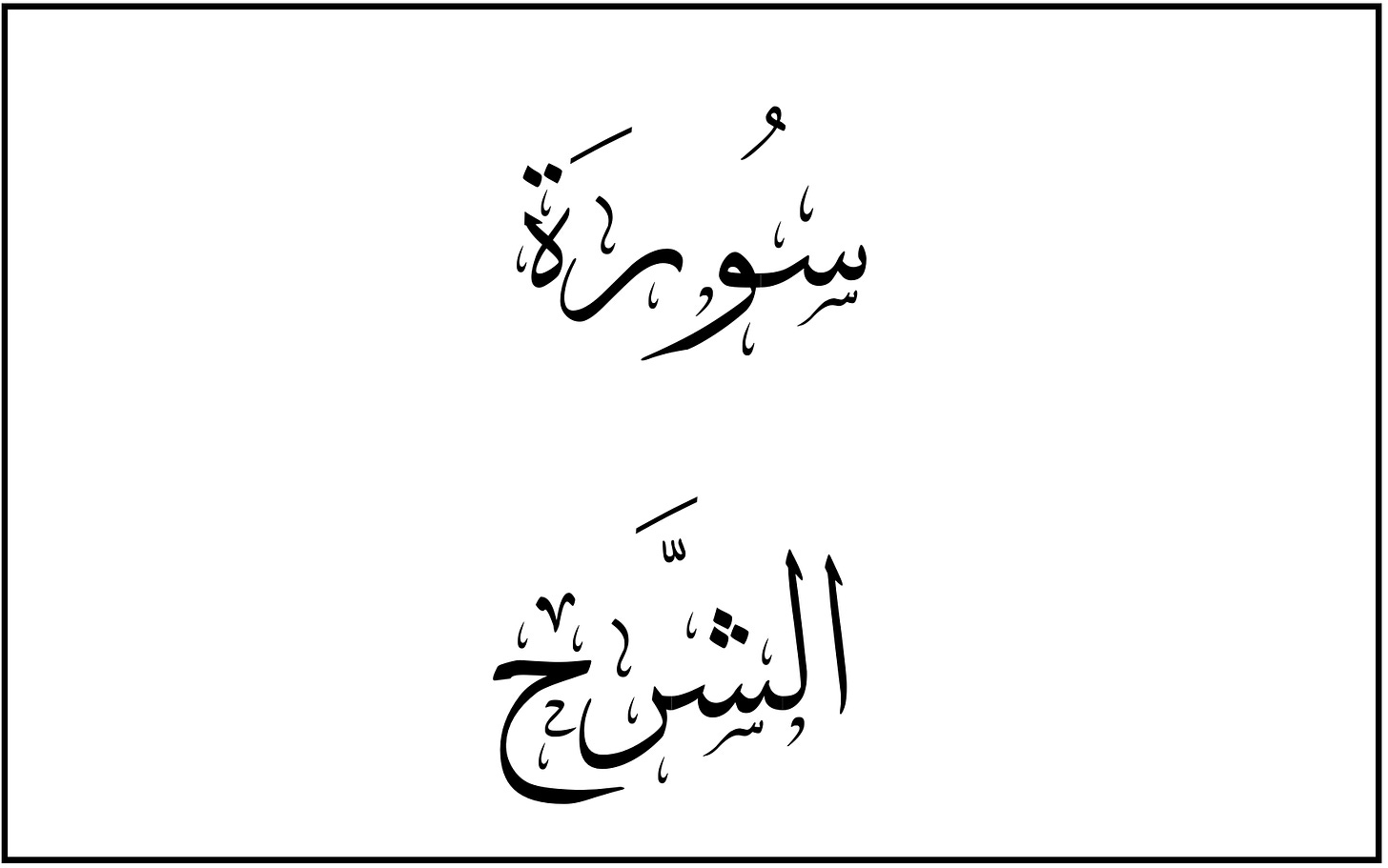Sūrat ash-Sharḥ (The Relief) shares similar themes to the previous sūrah, Sūrat aḍ-Ḍuḥā, in that it relates to elevating the Messenger ﷺ in his time of distress. It is also said to have been revealed around the same time, which makes this a Makkan sūrah as well. It appears that Sūrat ash-Sharḥ can be organized into a ring structure.
Or, more succinctly:
CONNECTIONS
[A]/[A’] – Allah ﷻ takes care of both the Messenger’s past and future worries. He ﷻ removed his ﷺ anxiety, and elevated his reputation. The future implores the Messenger ﷺ to turn towards Allah ﷻ in worship, which acts as his relief from upcoming endeavors. Here, we are witnessing the recurring motif of worship being paired with gratitude. Allah’s favors upon us should lead to more worship of Him as our way of thanks.
[B] – The center focuses on the current distresses in life. In the original Arabic, the grammar points the listener to the ease, not the difficulty.1 It also implies that for every one hardship there are two eases. This shows itself in the sūrah itself, with the ease of the past and future surrounding the mention of hardship in the middle.
And Allah ﷻ knows best.
For those who went through the pain of learning basic Arabic, here is your reward. This is why the ease is highlighted more than the difficulty:
1. The mubtada’ (subject) of the sentence in the original Arabic is yusran (ease), not al-ʿuṣr (the hardship)
2. Ism inna (the word associated with “certainly”) is connected with yusran (ease), not al-ʿuṣr (the hardship)
3. The use of the term “maʿa (with) instead of “baʿda (after).”
4. The mubtada’, “ease,” is in the nakirah (indefinite) form and the khabr (predicate), “difficulty,” is in the maʿrifah (definite) form.
5. The repetition of the wording in both āyāt.





